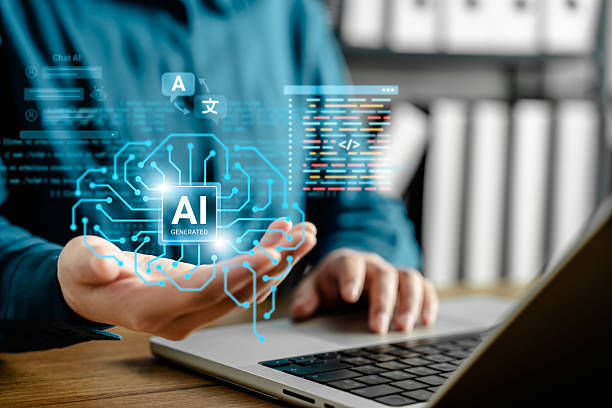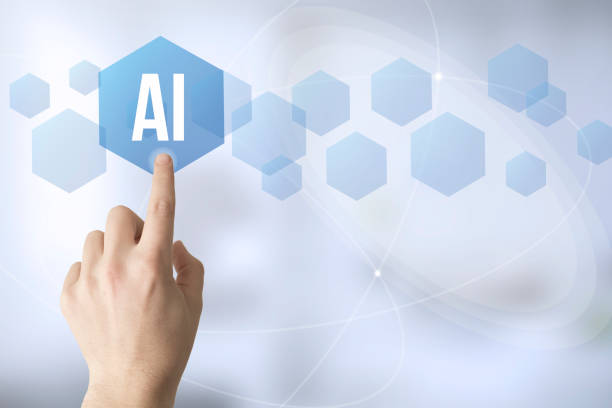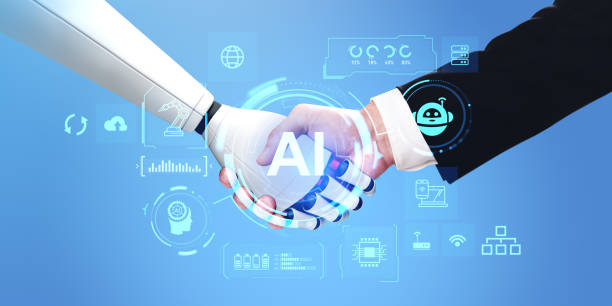What is an AI Robot and How Does it Work?
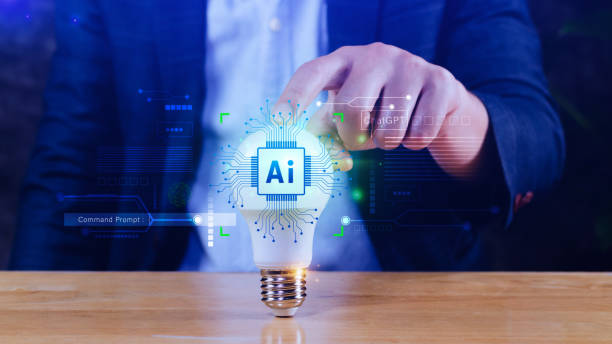
#AI Robot (Artificial Intelligence Robot) is a combination of two important technology fields: #ArtificialIntelligence and #Robotics.
Generally, an AI robot is a robot that uses artificial intelligence algorithms and techniques to perform tasks intelligently and autonomously.
These robots are capable of collecting, analyzing data, learning, making decisions, and performing appropriate actions based on those decisions.
Simply put, an AI robot strives to simulate human-like behavior in a machine.
This behavior includes learning, problem-solving, natural language understanding, and even creativity.
Artificial intelligence enables the robot to interact with its surroundings and respond automatically to changes.
Briefly, the operation of an AI robot includes sensors for data collection, a processor for data analysis and decision-making, and actuators for performing actions.
For example, an AI robot in a factory can use cameras and sensors to check product quality and automatically stop the production line if a defect is detected.
Thus, the AI robot plays an important role in increasing productivity and reducing costs.
Also, the AI robot has applications in various fields including medicine, agriculture, and customer services.
These robots help improve human quality of life by increasing accuracy and speed.
Did you know that 94% of a first impression of a company is related to its website design?
Rasaweb helps you create the best first impression by offering professional corporate website design services.
✅ Create a professional and trustworthy image of your brand
✅ Easier attraction of potential customers and improvement of online standing
⚡ Get free corporate website design consultation
Main Components of an AI Robot
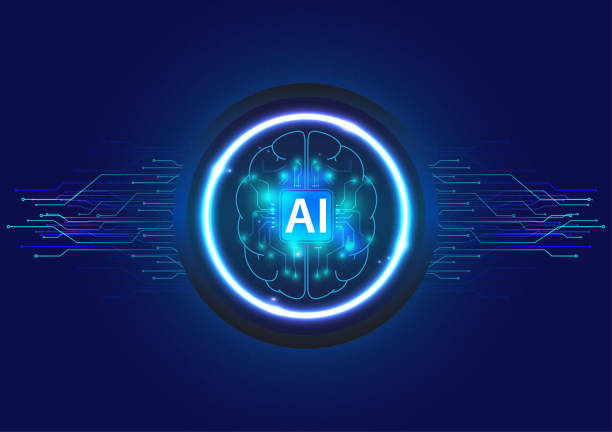
An AI robot consists of several main components, each playing a crucial role in its overall performance.
These components include #sensors, #processors, #actuators, #AIsoftware, and #power_source.
Sensors are responsible for collecting information from the surrounding environment.
This information can include images, sounds, temperature, pressure, and other sensory data.
Sensors come in various types, including cameras, microphones, temperature and pressure sensors, and tactile sensors.
Processors are the brain of the AI robot and are responsible for analyzing the information collected by the sensors.
Processors use AI algorithms for pattern recognition, decision-making, and planning.
Actuators are responsible for performing physical actions.
These actions can include movement, grasping objects, speaking, and other physical activities.
Actuators come in various types, including motors, arms, and speakers.
AI software is a set of algorithms and programs that allow the AI robot to operate intelligently.
This software includes machine learning algorithms, natural language processing, computer vision, and other AI techniques.
The power source provides the necessary energy for all components of the AI robot to function.
The power source can be a battery, an AC power supply, or a fuel cell.
The combination and interaction of these components enable the AI robot to perform complex tasks autonomously and intelligently.
Diverse Applications of AI Robots in Various Industries

AI robots have numerous applications in various industries due to their unique capabilities.
In the #manufacturing industry, AI robots are used for automating production lines, quality control of products, and performing hazardous tasks.
These robots can work with high precision and speed, reducing production costs.
In the #medical industry, AI robots are used for performing precise surgeries, diagnosing diseases, and providing remote healthcare.
These robots can operate with high accuracy and reduce the risk of human errors.
In the #agriculture industry, AI robots are used for planting, harvesting, and irrigating agricultural products.
These robots can work with high precision and optimize water and fertilizer consumption.
In the #customer_service industry, AI robots are used for answering customer questions, providing technical support, and performing financial transactions.
These robots can be available 24/7 and increase customer satisfaction.
In addition to these industries, AI robots also have applications in other fields such as #transportation, #education, and #entertainment.
Overall, AI robots play a significant role in economic and social development by increasing productivity, reducing costs, and improving service quality.
| Industry | Application |
|---|---|
| Manufacturing | Automating production lines, quality control |
| Medicine | Precise surgery, disease diagnosis |
| Agriculture | Planting and harvesting crops |
| Customer Services | Answering questions, technical support |
Challenges and Limitations of AI Robots
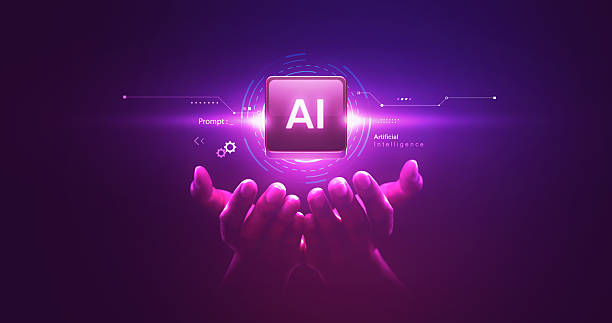
Despite numerous advantages, AI robots also face challenges and limitations.
One of the most significant challenges is the high cost of designing and building these robots.
AI robots require complex hardware and software, which incurs significant costs.
Another challenge is the need for high expertise and technical knowledge for developing and maintaining these robots.
Developers and engineers must have deep knowledge in fields such as artificial intelligence, robotics, and software engineering.
Another limitation is the dependency of AI robots on data.
These robots require large amounts of data to learn and improve their performance.
If sufficient data is not available, the robots’ performance may be limited.
Furthermore, ethical issues are also raised concerning AI robots.
For example, accountability for robot decisions, protecting data privacy, and preventing misuse of this technology are among the important issues that must be addressed.
Overall, overcoming these challenges and limitations will play a significant role in the development and expansion of AI robot applications.
Also, an AI robot requires machine learning, and this process can be complex and time-consuming.
This requires continuous research and development in the field of artificial intelligence so that robots can learn and operate more effectively.
Does your company’s website perform as befits your brand? In today’s competitive world, your website is your most important online tool. Rasaweb, specializing in professional corporate website design, helps you to:
✅ Build customer credibility and trust
✅ Convert website visitors into customers
⚡ Get a free consultation!
Machine Learning and Its Role in the Development of AI Robots
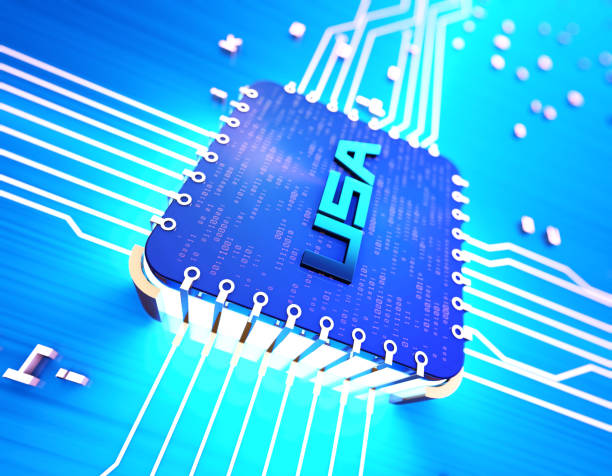
#MachineLearning is one of the most important subfields of artificial intelligence that plays a vital role in the development of AI robots.
Machine learning allows robots to learn from data and improve their performance without explicit programming.
In other words, robots use machine learning algorithms to identify patterns and relationships in data, and based on that, they make decisions and perform appropriate actions.
There are various types of machine learning algorithms, including supervised learning, unsupervised learning, and reinforcement learning.
In supervised learning, robots learn using labeled data.
This means that data is provided to the robot along with the correct answer.
In unsupervised learning, robots learn using unlabeled data.
This means that the robot must automatically identify patterns and structures within the data.
In reinforcement learning, robots learn through trial and error.
This means that the robot is placed in a specific environment and receives rewards or penalties for performing different actions.
The AI robot learns how to perform the best actions using this feedback.
The use of machine learning in AI robots enables the development of robots with more advanced and flexible capabilities.
These robots can automatically adapt to new conditions and perform complex tasks intelligently.
The Future of AI Robots and Their Impact on Human Life

The future of AI robots is very bright and full of potential.
With increasing advancements in artificial intelligence, robotics, and related technologies, AI robots are expected to play a much more significant role in human life in the future.
These robots can help improve the quality of human life in various fields, including healthcare, education, manufacturing, transportation, and customer services.
For example, in healthcare, AI robots can assist doctors in diagnosing diseases, performing precise surgeries, and providing remote healthcare.
In education, AI robots can assist teachers in providing personalized learning, evaluating student performance, and giving effective feedback.
In manufacturing, AI robots can help automate production lines, control product quality, and perform hazardous tasks.
With this capability, the AI robot plays an important role in improving productivity and reducing costs.
In transportation, AI robots can contribute to the development of self-driving cars, traffic management, and providing smart transportation services.
However, the development and use of AI robots also come with challenges that must be addressed.
For example, ethical, security, and economic issues related to this technology must be seriously considered to prevent its misuse and ensure its benefits are distributed fairly.
Case Study of Successful AI Robots in Today’s World
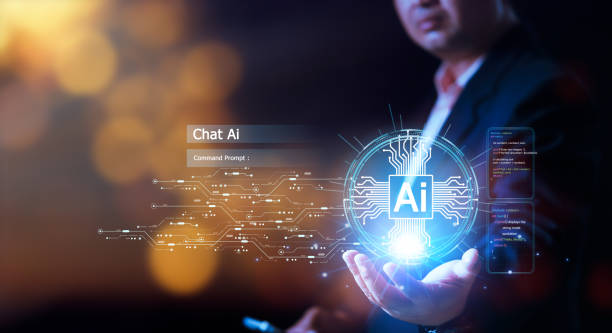
Today, there are numerous examples of successful AI robots in various industries that have demonstrated significant performance.
One such example is warehouse robots, used in large warehouses for moving and sorting goods.
These robots, using AI algorithms, can automatically find their path, identify goods, and move them to the appropriate location.
Another example is surgical robots, used in hospitals to perform precise and minimally invasive surgeries.
These robots, using advanced cameras and sensors, provide the surgeon with a better view of the surgical site and help them operate with greater precision.
Also, chatbot robots are an example of AI robots used in customer services to answer questions and provide support.
These robots, using natural language processing, can understand human language and effectively answer customer questions.
Furthermore, AI robots have made significant progress in the field of agriculture.
Robots capable of identifying and eliminating weeds without the use of chemicals are an example of these advancements.
These robots can help reduce the use of pesticides and preserve the environment.
| Robot Type | Application Area | Features |
|---|---|---|
| Warehouse Robot | Warehousing and Logistics | Automated goods movement, error reduction |
| Surgical Robot | Medicine and Surgery | High precision, reduced invasiveness, faster recovery |
| Chatbot | Customer Services | 24/7 responsiveness, cost reduction |
Skills Required to Work with AI Robots

To work with AI robots, a set of technical and non-technical skills is required.
Technical skills include programming knowledge, familiarity with AI algorithms, and hardware skills for robots.
Programming knowledge is essential for developing and customizing robot software.
Familiarity with AI algorithms is necessary for designing and implementing intelligent systems that robots utilize.
Hardware skills for robots are essential for robot maintenance and repair.
In addition to technical skills, non-technical skills are also important for working with AI robots.
These skills include problem-solving ability, critical thinking, and communication skills.
Problem-solving ability is essential for identifying and resolving robot-related issues.
#Critical_thinking is essential for evaluating robot performance and proposing improvement solutions.
Communication skills are essential for collaborating with other experts and communicating with customers.
Overall, a combination of technical and non-technical skills is necessary for success in working with AI robots.
Furthermore, having an interest in learning and staying updated with the latest advancements in this field is also of high importance.
Given the rapid growth of AI robot technology, continuous training and updating technical knowledge are crucial.
Are you tired of your e-commerce site having visitors but no sales? Rasaweb solves your main problem by designing professional e-commerce websites!
✅ Significant sales increase with targeted design
✅ Flawless user experience for your customers
⚡ Get a free consultation!
Important Considerations in Designing and Developing AI Robots

Designing and developing AI robots is a complex and multi-stage process that requires attention to important considerations.
One of the most important considerations is the precise definition of project goals and requirements.
Before starting design and development, it must be clearly defined what tasks the robot should perform and what requirements must be met.
Another point is the appropriate selection of hardware and software.
Hardware and software must be compatible with project goals and requirements and have appropriate performance.
Also, special attention must be paid to security issues.
Robots must be protected against cyberattacks and potential misuse.
Furthermore, ethical issues must also be considered.
Robots must be designed to respect human rights and values.
Designing a suitable user interface is also of high importance.
The user interface should be simple and understandable so that users can easily interact with the robot.
Continuous testing and evaluation are also essential to ensure the robot’s correct operation.
The AI robot must be designed and developed to operate safely and effectively in the intended environment.
By observing these important considerations, successful AI robots can be designed and developed to help improve human quality of life.
How to Build an AI Robot? A Step-by-Step Guide

Building an AI robot can be an exciting and challenging project.
To start this project, you must first define your goal.
What do you want the robot to do? After defining the goal, you need to acquire the necessary components.
These components include hardware (such as the robot body, motors, sensors) and software (such as operating system, AI algorithms).
Then you need to assemble the hardware and install the software.
After installing the software, you must program the robot.
For this, you can use various programming languages such as Python, C++, or Java.
During programming, you must implement AI algorithms so that the robot can perform its tasks intelligently.
After programming, you must test the robot and ensure its correct operation.
If there is an issue, you must correct the code and re-test the robot.
This process may be repeated several times until the robot functions correctly.
Finally, after ensuring the robot’s correct operation, you can use it to perform your desired tasks.
Remember that building an AI robot requires patience, perseverance, and technical knowledge.
With effort and practice, you can build an intelligent robot that helps you with various tasks.
Frequently Asked Questions
| Question | Answer |
|---|---|
| What is an AI robot? | It is a robot that uses artificial intelligence capabilities to perceive its environment, reason, learn, and make decisions to perform complex tasks autonomously. |
| What is the main difference between a regular robot and an AI robot? | AI robots can learn and adapt to their environment, while regular robots typically operate based on fixed, predetermined programming. |
| In what areas do AI robots have applications? | In fields such as industry (production lines), medicine (robotic surgeries), services (customer support, smart vacuum cleaners), exploration (space and underwater), and entertainment. |
| How do AI robots learn? | They acquire new skills by analyzing large data and identifying patterns through machine learning and deep learning algorithms. |
| Can AI robots have emotions? | Currently, no. They can identify or simulate emotions, but they do not experience real emotions like humans. |
| What are the main advantages of using AI robots? | Increased productivity, reduced human error, performing dangerous or repetitive tasks, and providing innovative and efficient services. |
| What challenges exist in the development of AI robots? | The need for abundant and high-quality data, algorithmic complexity, ethical issues, cybersecurity, and high research and development costs. |
| Are AI robots dangerous to humans? | No, with adherence to safe design principles and ethical regulations. Concerns are mostly related to social and economic impacts, such as changes in the job market. |
| What is an example of an AI robot in daily life? | Smart vacuum cleaner robots (like Roomba) that automatically map and clean homes, or smart voice assistants (like Siri and Alexa). |
| How is the future of AI robots predicted? | They are expected to become smarter, more autonomous, and capable of more complex interactions with humans, playing a more prominent role in industry, medicine, transportation, and daily life. |
And other advertising agency Rasaweb services in the field of advertising
- Smart Sales Automation: An innovative platform for improving customer behavior analysis with precise audience targeting.
- Smart Marketing Automation: A combination of creativity and technology for digital branding through intelligent data analysis.
- Smart Marketplace: An innovative platform for improving customer behavior analysis with custom programming.
- Smart Link Building: Designed for businesses seeking user engagement through customized user experience.
- Smart Direct Marketing: A novel service for enhancing digital branding through key page optimization.
And more than a hundred other services in the field of internet advertising, advertising consultation, and organizational solutions
Internet Advertising | Advertising Strategy | Advertorial
Resources
The Future of AI Robots: Challenges and Opportunities
What is Artificial Intelligence? A Complete Guide
The Impact of Artificial Intelligence on Daily Life
Latest Developments in Robotics and Artificial Intelligence
? For your business to thrive in the digital world, Rasaweb Afarin Digital Marketing Agency paves your path to success by providing services such as user-friendly website design, professional SEO, and social media management.
📍 Tehran, Mirdamad Street, next to Bank Markazi, Southern Kazeroon Alley, Ramin Alley No. 6

